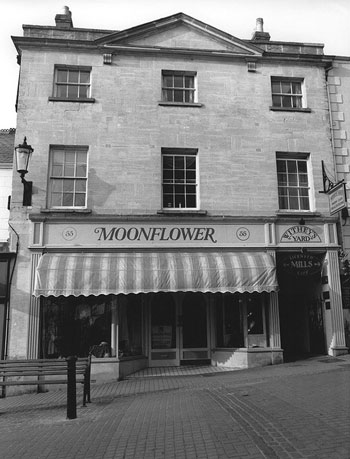Completed Projects | Medieval Hall | Withey's Yard | Cainscross Toll House | Arundel Mill House | Anti-Slavery Arch | Brunel Goods Shed Phase 1 | Brunel Goods Shed Phase 2 | HLF Community Action | SWAPT Heritage Fair | Plaques
|
Stroud Preservation Trust took the opportunity to continue improving the blighted High Street with the acquisition of No. 55, now “Moonflower”. This handsome building was in a poor state of repair, especially the then inaccessible and derelict top floors. The classical façade had been marred by an unsympathetic modern shop front. The Trust, again working with Richard Feilden of Feilden Clegg Architects, came up with an imaginative and sympathetic scheme which provided a large shop facing the High Street, four flats above the shop and opened up the old alleyway to the yard behind. This provides access to two further shops, Mills Cafe, the Health Centre and the courtyard with outside seating. The new courtyard was named Withey's Yard after the family who owned 55, High Street for over a century from 1816, running the shop first as a druggist's, then a grocer's. The project is a visual and commercial success which cleverly maximised the potential of the site. Many of the new, local and independent businesses who first moved in are still there and thriving, a testament to the success of a conservation led approach to regeneration. Soon after the project was completed, the High Street was finally pedestrianised. |

